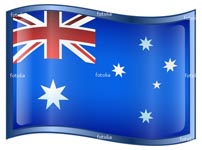Hunters have crocodiles in their sights
 Sydney - If you fancy Matt Wright's job, you'll need a helicopter pilot's licence, a willingness to work alone in the wilds of Australia's far north and nerves of steel.
Sydney - If you fancy Matt Wright's job, you'll need a helicopter pilot's licence, a willingness to work alone in the wilds of Australia's far north and nerves of steel.
Wright makes a living catching crocodiles considered a danger to humans and shifting them to more isolated places.
A recent customer was a cattle station owner worried by a reptile that at 850 kilograms and 5.6 metres weighed more than a Fiat 500 and was longer than a Bentley Continental.
"This isn't a dangerous crocodile if it's left in its own environment away from human activity," Wright said after trussing his latest catch and readying it for relocation.
More and more crocodiles are venturing into places where there are people. And more and more people are invading territory that used to be the preserve of crocodiles.
"Twenty years ago, people could swim in places you can't even stick your big toe in now," said Michaela Johnston, an Aboriginal elder who is pushing for the Northern Territory to overturn a 40-year ban on the killing of crocodiles.
Johnston wants officials in Darwin to sanction safaris for big game hunters who would pay a big fee to bag a whopper saltwater crocodile.
"Hunting will create a new industry and employment for Aboriginal people and take out the larger problem males," she said.
A rash of deaths has increased pressure for a crocodile cull. The latest to die was 11-year-old schoolgirl Briony Goodsell. She was swimming in a river near her home on the outskirts of Darwin.
Michael Dobrobitch, a neighbour, said the Outback lifestyle is inherently dangerous.
"You can get killed by a car, or you can get taken by a croc, or you can get run down by a buffalo - anything can happen and that's the chance you take," Dobrobitch said.
It was the second fatal crocodile attack in five weeks and has galvanized public opinion in favour of a cull.
Crocodiles were hunted almost to extinction in the 1960s. Numbers in the Northern Territory have bounced back from a low of 3,000 in 1971 when they were made a protected species to around 70,000.
Back from the brink, crocodiles have started venturing further up waterways.
"Suddenly, big salties are turning up where we haven't seen them before," said Graeme Webb, the far north's top crocodile expert. "It's become a real problem because in other areas where crocodiles are more prominent, everybody knows they are there and take precautions."
In 2002 a 25-year-old German tourist was taken by a 4.6-metre crocodile in a Kakadu National Park pond that her local guide assured her was crocodile-free. When rangers came to catch what they thought was a lone killer, they found seven similar-sized crocodiles at the popular spot where the woman had been told she could swim.
It's the federal government in Canberra that must be persuaded before the guns come out. Some argue that once the shooting starts, it would be hard to stop because anyone outside the city of Darwin would be able to claim they are at risk from crocodiles.
Even city slickers could demand protection. Earlier this month, a crocodile was found in a public park in Darwin only a stone's throw from a children's playground.
The federal government is unlikely to shift ground on trophy hunting. Canberra politicians said tourists would be aghast at the notion they were sharing national parks with people who were paying to shoot animals for pleasure. They warned of a backlash against Australia that would outweigh any benefit that safaris would bring to local communities. (dpa)